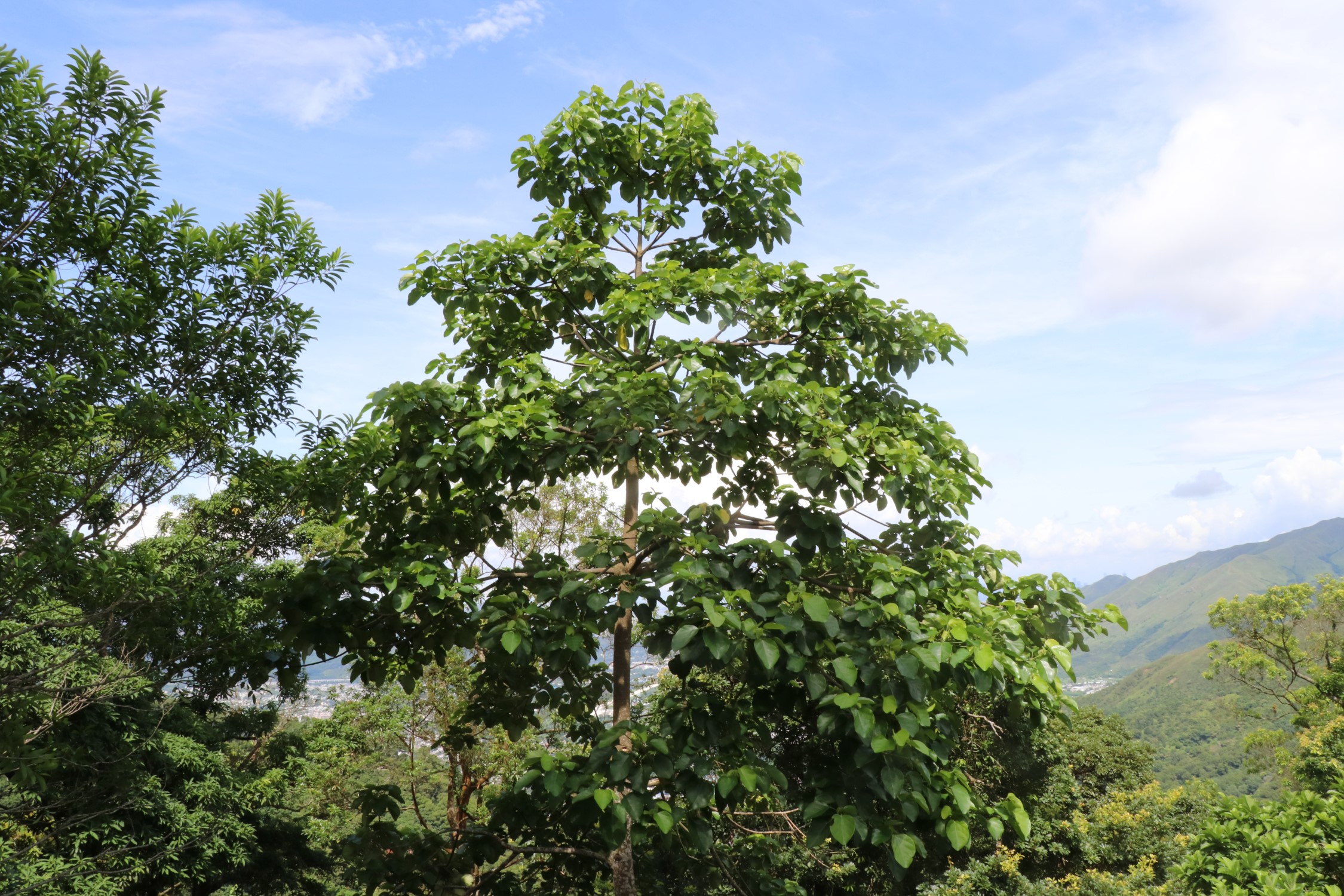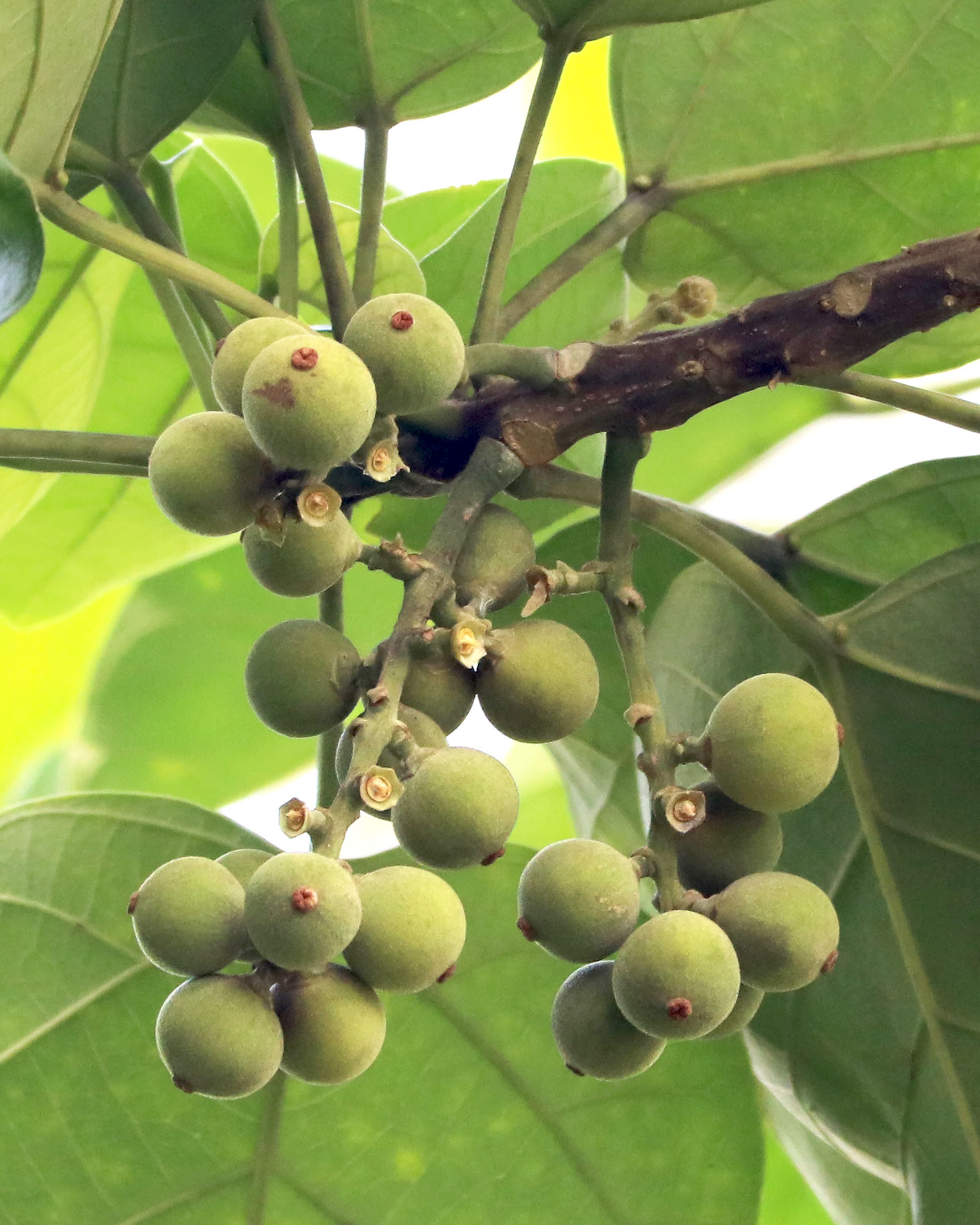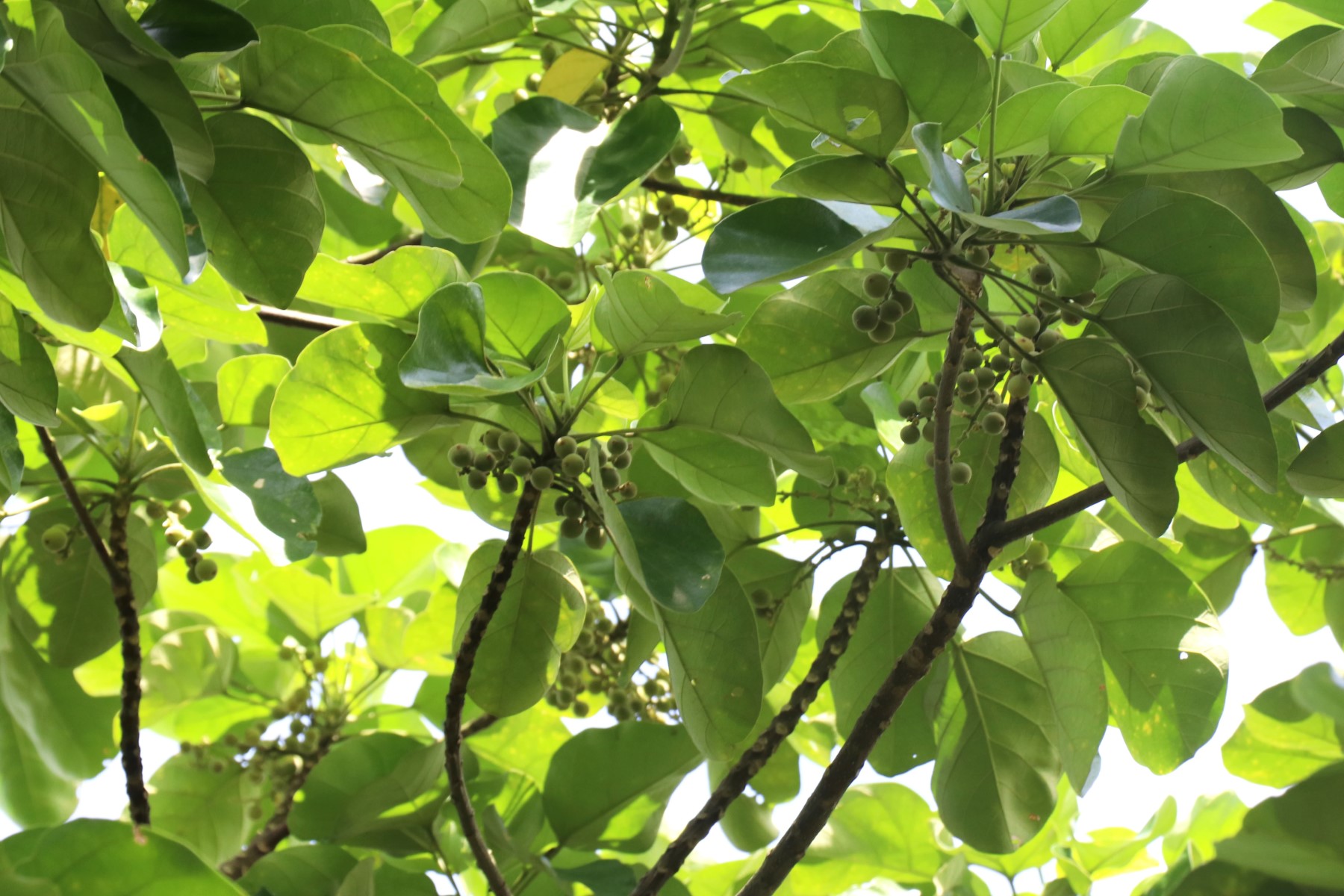From Seed to Fruit
Endospermum chinense is a fast-growing native tree that grows well in harsh, exposed environments. The ability to grow in challenging conditions means that we might expect to find a large population in Hong Kong. However, due to relentless hill fires and deforestation, the species now has a very restricted distribution limited in old growth forests and fung shui woodlands, with fewer than one thousand individuals thought to persist in the entirety of Hong Kong.
A now fruiting individual (photo 1) entered our collection as a seed collected in a Country Park in Hong Kong in Autumn in 2012. It was carefully raised in our Native Tree Nursery before being planted out as a small sapling in our garden in 2014. This year, it has already attained seven meters in height and has finally started producing fruits for the first time. To see it fruiting this year is evidence of our hard work in helping this tree spread against all the odds. As its seeds disperse, germinate and grow, we look forward to seeing a surge of the next generation of E. chinense trees on our hillside in the coming years.
Planting out this canopy tree sets the scene for other forest layers to emerge. Canopy trees build the foundation of a well-functioning forest by providing initial protection, shade and nutrients for other plants growing nearby.
Endospermum chinense is a tree species of historical significance. In the past, when nature was an integral part of people’s lives, where deep connections with the environment were manifest and common practice, the wood of E. chinense trees was used to make furniture and tools. On top of that, ancient knowledge passed down through the generations and taught that its leaves and bark help relieve pain, as well as the symptoms of malaria.
However, the value of this vibrant tree extends beyond its of great cultural and historical significance. It is also an incredibly attractive tree to look at, especially when viewed with sunlight passing through its crown to the understorey. And fruiting from late summer into the autumn serves a great ecological purpose by providing food for animals as nutrient sources become scarce in the run up to winter.
In the broader contexts of our city life, E. chinense is a good candidate for urban greening. With its fast-growing properties, attractive structure and the ability to attract birds and other animals, it would surely be a bold symbol of regeneration and growth.

Photo 1. A fruiting E. chinense that reached seven meters in height

Photo 2. Fruits of E. chinense

Photo 3. A close up of its fleshy fruits

Photo 4. The tree is adorned with green fruits

